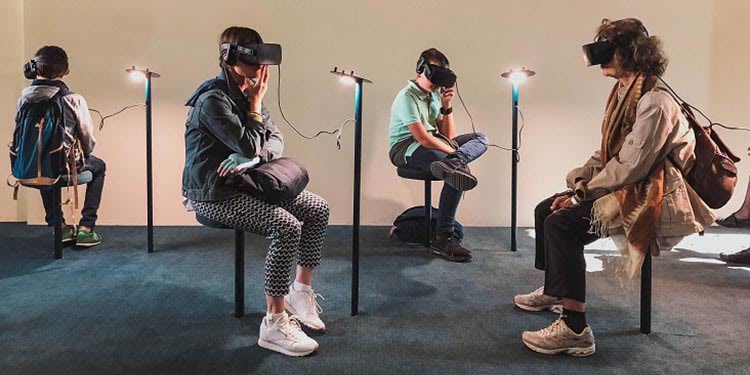What does the FE college of the future look like? #FutureofEducation

In the same way that machines changed the lives of our ancestors in the 19th century, so technology is transforming our world in the 21st century as we enter the Fourth Industrial Revolution.
Here, Jisc’s head of FE and skills, Paul McKean, imagines a day in the life of a further education principal in a few years’ time:
It’s first thing on a weekday morning. The learner progress dashboard you asked the data analytics system to provide after last night’s governors’ meeting is live on your desktop. Powered by the systems your IT team has put in place, your request took up no valuable teaching time because data collection is automatic.
You also notice an auto-generated report (using artificial intelligence), highlighting a significant ‘closing of the gap’ in achievement for male black and minority ethnic (BME) learners, which you tag to include in the college equality and diversity report.
Through a classroom door, you see 11 out of 12 learners receiving one-to-one help; your ‘students at risk’ dashboard had identified they were struggling, enabling the tutor to intervene in time to help these learners succeed.
Your staff are using the technology to collaborate with each other, leading to better record management and access to the right information, when and where it’s required. This reduced burden frees up tutors to develop their skills and you’re pleased to see a digital leaders training session taking place down the corridor.
Animated GCSE English learners are using VR headsets to immerse themselves in a novel, which brings characters’ challenges and motivations to life. students’ learning is immersive, interactive, flexible, fun and, most importantly, personalised to meet their needs – enabling them to excel.

Through the library windows you see students working in collaborative groups, researching coursework and checking their progress through online quizzes and games. You observe computer-aided differentiation, with a small group of learners, supported by machine-based learning.
From the different tasks in hand you see ‘the system’ recognises individual’s strengths and areas for improvement and it’s stretching and challenging the most capable while providing constructive scaffolding for less able learners.
The librarian is adding the latest e-books to the online library catalogue and directing his team to add the titles to curriculum VLE courses. He’s pleased because all learners can access digital resources at the same time, whenever and wherever they are. And, because he no longer handles book collections or access management tasks, he has time to give learners personalised support.
In the staffroom, tutors have time to put real thought into marking because the technology has done the legwork – the cognitive language assistant pre-marks the assignments and identifies any attempts at plagiarism.
One of your admin team mentions that the college chatbot is currently engaging in nearly 1,500 conversations with students and staff.
They’re asking it questions such as: “What are my results?” “What time is this class at?” The chatbot has access to the entire college dataset, so it can respond immediately, leaving the admin team to focus on more important questions.
As soon as your SMT meeting starts, everyone is ready to find solutions to issues because nobody has had to spend time wading through board papers – all the information is clearly highlighted on dashboards.
The second item on the agenda is a report from your pastoral support manager on learners who’ve been identified through your data intelligence system as suffering from wellbeing issues. A local professional athlete who experiences similar problems recently visited to share his story; a couple of anonymised extracts from the learners’ reflective journals pop up on the screen and it’s evident how much his visit has helped them.
As you leave your meeting, your phone buzzes to inform you 73 prospective students have been touring the campus virtually in advance of their transition next year. They’re keen to find out more because further education is becoming the place to go to become digitally skilled and ready to succeed in the world of work.
This may sound like pie in the sky, but some of it is already happening in colleges across the UK. Some of you are using technology to streamline data collection and centralise administrative systems. This is enabling you to reduce travel between campuses and to hold virtual meetings with employers and higher education partners.
Beyond this, some colleges are blazing a trail, using digital technologies to speed up the arrival of an exciting and achievable future. In this vision, all FE colleges are vibrant, human-centred, productive, sustainable centres of learning, set up for the future.
The available technology is exciting, but it is not the story, it’s a tool. It’s what you do with these tools in your colleges that will make the difference for your learners (whether they’re on campus, working at their employer’s premises or studying elsewhere), tutors, IT managers, librarians and administrators – as well as local employers and other partners.
If we all work together now, we can make sure FE becomes the destination of choice for learners who want to develop digital skills to prepare them to shine when they join the world of work.
Paul McKean, Head of FE and Skills, Jisc
To find out more, come and speak to us at the AoC Conference, Tuesday, 20 November, 11.30am – 12.40pm.










Responses